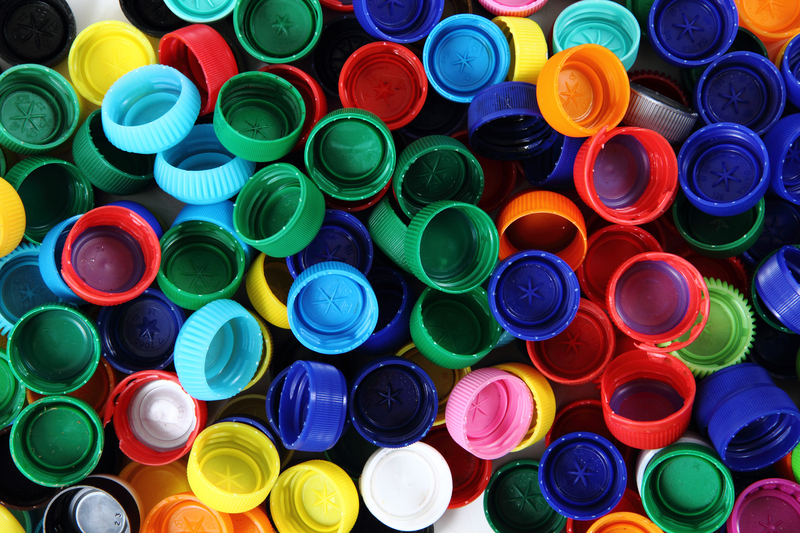PPE Waste Disposal Techniques That Make a Difference
In recent years, the use of Personal Protective Equipment (PPE) has become an essential part of our daily lives, particularly due to the COVID-19 pandemic and ongoing public health concerns. While PPE such as face masks, gloves, gowns, and face shields have saved countless lives, their increased usage has given rise to a new global challenge: PPE waste management. Proper disposal of PPE waste is critical for both environmental conservation and public health safety. In this comprehensive article, we'll explore PPE waste disposal techniques that make a difference, ensuring a healthier planet and safer communities.

Understanding PPE Waste and Its Environmental Impact
PPE waste refers to any disposable equipment used for protection against health hazards. Items like single-use masks, nitrile gloves, gowns, face shields, and hair covers are commonly found in hospitals, homes, and public spaces. Unfortunately, improper disposal of these items can have far-reaching implications.
- Environmental Pollution: PPEs, typically made from plastics or synthetic fibers, take centuries to break down. They release microplastics, pollute water bodies, and harm wildlife.
- Public Health Risks: Infectious PPE waste can spread diseases if left unattended or improperly handled, endangering sanitation workers and the wider community.
- Waste Management Strain: Sudden spikes in PPE demand have overwhelmed waste management systems, leading to illegal dumping and environmental hazards.
Addressing these issues requires innovative and sustainable PPE waste disposal methods that not only minimize harm but actively contribute to environmental health.
Best PPE Waste Disposal Techniques
1. Segregation of PPE Waste at Source
The foundation of responsible PPE waste disposal starts with source segregation. This involves separating PPE waste from regular trash immediately after use. Designate clearly labeled bins for PPE items in high-use locations like hospitals, clinics, offices, and public areas.
- Color-coded bins: Use red or yellow bins specifically for infectious and hazardous waste, as recommended by WHO and local guidelines.
- Clear instructions help prevent cross-contamination and simplify downstream processing.
- Immediate segregation reduces the risk of disease transmission and environmental leakage.
2. Safe Handling and Transportation
Once collected, PPE waste must be safely handled and transported to treatment facilities. This step is crucial in preventing leaks and exposure.
- Use leak-proof, puncture-resistant containers for storage and transport.
- Train workers in correct PPE waste handling techniques to minimize contact and spread of pathogens.
- Implement strict scheduling for waste collection to avoid accumulation in public spaces.
3. Incineration: Controlled High-Temperature Disposal
Incineration is a widely used PPE waste management technique for medical and infectious waste. High-temperature incinerators are capable of reducing the bulk of waste and destroying pathogens.
- Ideal for heavily contaminated single-use PPEs like masks and gloves.
- Modern incinerators are equipped with pollution control mechanisms to minimize toxic emissions.
- Regulations must be strictly followed for environmentally safe incineration.
Advantages:
- Reduces waste volume by up to 90%.
- Destroys infectious agents effectively.
- Potential for air pollution if not managed correctly.
- High operational costs.
4. Autoclaving and Steam Sterilization
Autoclaving uses high-pressure steam to sterilize PPE waste, especially effective in hospital settings. This process allows non-plastic PPE waste to be rendered safe and sometimes repurposed or sent for recycling.
- Destroys most pathogens and minimizes infection risks.
- Reduces bulk waste sent to landfills.
- Environmentally friendlier than incineration, with no toxic emissions.
5. Chemical Disinfection
Chemical disinfectants (chlorine compounds, peroxides) are also used to treat PPE waste, primarily in smaller facilities. Disinfection makes the waste safe for landfill disposal.
- Best suited for surfaces or thin PPE items.
- Proper concentration and contact time are crucial for effectiveness.
- Avoids the need for high-temperature equipment.
6. Safe Landfilling
While not always ideal, some PPE waste ends up in engineered landfills. Safe landfilling depends on:
- Pre-treating waste to reduce pathogen load (via autoclaving or chemical disinfection).
- Using sealed and lined landfill cells to prevent leachate contamination.
- Regular monitoring for potential leaks or environmental risks.
7. Recycling of Certain PPE Materials
Recycling PPE waste is possible, especially for items rarely exposed to infectious materials, like face shields and certain types of masks. Innovative companies are researching recycling processes for polypropylene masks and gowns.
- Melting and reprocessing: Used for clean PPE items, converting plastics into construction blocks or new products.
- Mechanical recycling: Shredding and incorporating plastic fibers into new materials.
- Requires rigorous sorting and pre-treatment to ensure safety.
Integrating recycling into PPE waste management systems significantly reduces the pressure on landfills and conserves raw materials.
Innovative PPE Waste Solutions Emerging Worldwide
1. PPE Waste-to-Energy Technologies
Waste-to-energy (WTE) plants are increasingly being considered for managing large volumes of contaminated PPE. These facilities convert waste into electricity or heat, offering dual benefits of waste reduction and renewable energy generation.
- Reduces waste mass while providing energy to the grid.
- Advanced pollution controls minimize environmental impact.
- Provides a sustainable alternative to traditional waste disposal.
2. Biodegradable PPE Alternatives
A forward-thinking solution to the PPE waste crisis is the promotion of biodegradable PPE items made from plant-based fibers, starch, or bioplastics. Such items decompose naturally, leaving less environmental residue.
- In the future, wide-scale adoption could drastically cut non-biodegradable PPE waste.
- Supports circular economy principles.
- Investments and research are crucial for mass production and wide adoption.
3. Community Collection Drives and Take-Back Programs
Many organizations and municipalities are launching PPE take-back programs, setting up designated bins in public spaces. These efforts collect used PPE and ensure its safe disposal or recycling.
- Encourages responsible PPE disposal in non-medical settings.
- Raises public awareness and involvement in waste reduction.
- Partnerships with recycling firms further enhance success rates.
Practical Tips for Safe PPE Waste Disposal at Home and Work
For Individuals and Families
- Always remove masks and gloves using the ear straps and cuffs rather than surface area to avoid contamination.
- Place used PPE in a separate, securely tied plastic bag before binning with household waste. Clearly label the bag as "PPE."
- Wash hands thoroughly after disposing PPE, even if the process feels routine.
- Do not flush PPE items down toilets or drains.
- Opt for reusable PPE like washable masks and gloves when possible to reduce waste volume.
For Workplaces and Facilities
- Train staff on correct PPE waste segregation and handling procedures using posters or digital reminders.
- Install sufficient, clearly marked bins for PPE at entry and exit points.
- Work with certified biohazard waste contractors for safe PPE haulage and treatment.
- Periodically review waste volumes and disposal methods to identify improvement opportunities.
- Encourage responsible PPE consumption--avoid unnecessary single-use where possible.
The Role of Legislation and Policy in PPE Waste Disposal
Sustainable PPE waste management is not just an individual or organizational responsibility. Government regulations and policies play an essential role in standardizing and enforcing safe disposal practices.
- Strict guidelines for medical, industrial, and domestic PPE waste handling are essential.
- Investment in PPE recycling and safe disposal infrastructure must be prioritized at the municipal and national levels.
- Incentivizing development of biodegradable PPE alternatives through grants and tax breaks can catalyze change.
- Public education campaigns are critical for changing disposal habits and raising environmental consciousness.

The Future of PPE Waste Management: Building Resilience
As global awareness of environmental issues grows, so does the urgency to improve how we manage PPE waste. Sustainable PPE disposal techniques are evolving rapidly, thanks to collaborations between scientists, policymakers, waste management companies, and the general public. The challenges are significant, but so are the opportunities for innovation.
Looking ahead, some of the most effective strategies will include:
- Widespread adoption of advanced recycling and waste-to-energy technologies.
- Expansion of take-back and community collection programs around the world.
- Mass production and distribution of biodegradable PPE materials for medical and non-medical use.
- Greater integration of digital tracking and monitoring for PPE waste generated and treated.
- Continued education and engagement with individuals and communities for behavioral change.
By prioritizing and implementing these best practices and innovative solutions, we can drastically reduce the negative impacts of PPE waste - protecting our environment for future generations while maintaining the essential health protections PPE provides.
Conclusion: Making a Difference Starts with Us
The surge in PPE usage has kept millions safe but has challenged our waste management systems and environmental sustainability goals. By understanding the various effective PPE waste disposal techniques - from segregation and sterilization to recycling, waste-to-energy, and policy interventions - every individual, organization, and government can play a vital part in building a more sustainable future.
Let's work together by adopting these PPE waste management solutions in our daily practices and advocating for systemic changes. After all, making a difference in PPE waste disposal means making a difference for the planet and all who inhabit it.